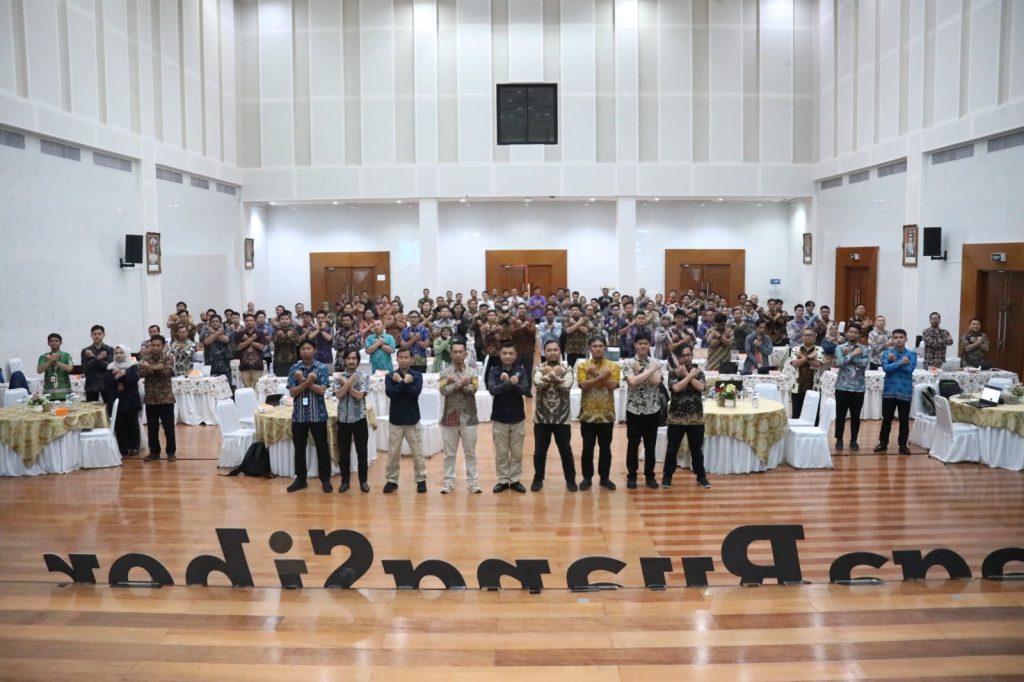
Cybersecurity and Tourism: the 2025 CSIRT Technical Training
On September 3, 2025, I had the chance to join the Cybersecurity Incident Preparedness Technical Training for the Indonesian Computer Security Incident Response Team (CSIRT Indonesia) of the Central Government Organization.
For context, the Labuan Bajo Flores Tourism Authority (LBFTA)—where I contribute in IT and public communication—doesn’t yet have an official CSIRT team. That’s why I was pretty excited when BSSN (Badan Siber dan Sandi Negara), the Indonesian National Cyber and Crypto Agency, made their inaugural visit to our office. Their mission? To start a conversation about why LBFTA needs its own CSIRT team.
And honestly, the timing couldn’t be better.
Why This Matters So Much
During the technical guidance, we explored the World Economic Forum (WEF) 2025 Report. The findings were sobering: geopolitical tensions, AI-powered threats, and supply chain vulnerabilities are creating unprecedented risks to critical infrastructure worldwide.
Then came the numbers from BSSN-IDSIRTII/CC: in July 2025 alone, anomalous internet traffic in Indonesia hit 567,717,476 incidents. Yes, you read that right. Half a billion. That’s not just noise—it’s a wake-up call.
The Cyberdrill
One of the coolest parts of the event was the Cyberdrill session. It wasn’t just about sitting and listening—we actually got to test our skills, simulate threats, and see how well we could respond under pressure. For me, it felt like going back to my roots.
See, before I was involved in tourism and digital communication, I was deep in the Open Source community. Back in 2013, I chaired the Sanata Dharma Open Source Community (SaOS) at Sanata Dharma University, Yogyakarta. We were a geeky but passionate bunch—building the Sanata Dharma Operating System (based on the Linux kernel), cloning the Ubuntu repository, and even running our own community website. I was also part of Ubuntu Jogja and the Indonesian Linux User Community.
So, participating in the cyberdrill session felt like rediscovering that old spirit. The thrill of problem-solving. The teamwork. The rush of trying to outsmart digital threats.
What LBFTA’s CSIRT Could Look Like
Now, let’s talk about the future. If LBFTA forms its own CSIRT (and I strongly believe we should), here’s what I imagine we could focus on:
- Incident Coordination – setting clear protocols when something goes wrong.
- Digital Infrastructure Protection – keeping tourism portals, TIC systems, and the Command Center safe.
- Staff Training & Awareness – doing this regularly, so everyone stays sharp.
- Collaboration with Senior CSIRTs – because cybersecurity is a team sport, and we’d need to connect with national hubs like BSSN.
My Thoughts
I felt two things: urgency and optimism. Urgency, because threats are real and massive. Optimism, because with the right mindset and collaboration, we can build strong defenses—even in places like LBFTA, where tourism and digital ecosystems are growing hand in hand.
For me personally, this wasn’t just a workshop. It was a reminder of why I fell in love with tech in the first place, and why cybersecurity should matter to anyone who’s serious about building sustainable digital systems.
Here’s hoping LBFTA’s own CSIRT becomes a reality soon. Because protecting tourism today means safeguarding Flores’ digital tomorrow.
—
Engel Vione
IT Support Specialist & Public Communication Officer
Labuan Bajo Flores Tourism Authority
Recent Posts
Topic
Search
Let's Collaborate!
I’m not the best guy you ever met, but surely, you can rely on me to solve your problem. Sound fair enough right?
